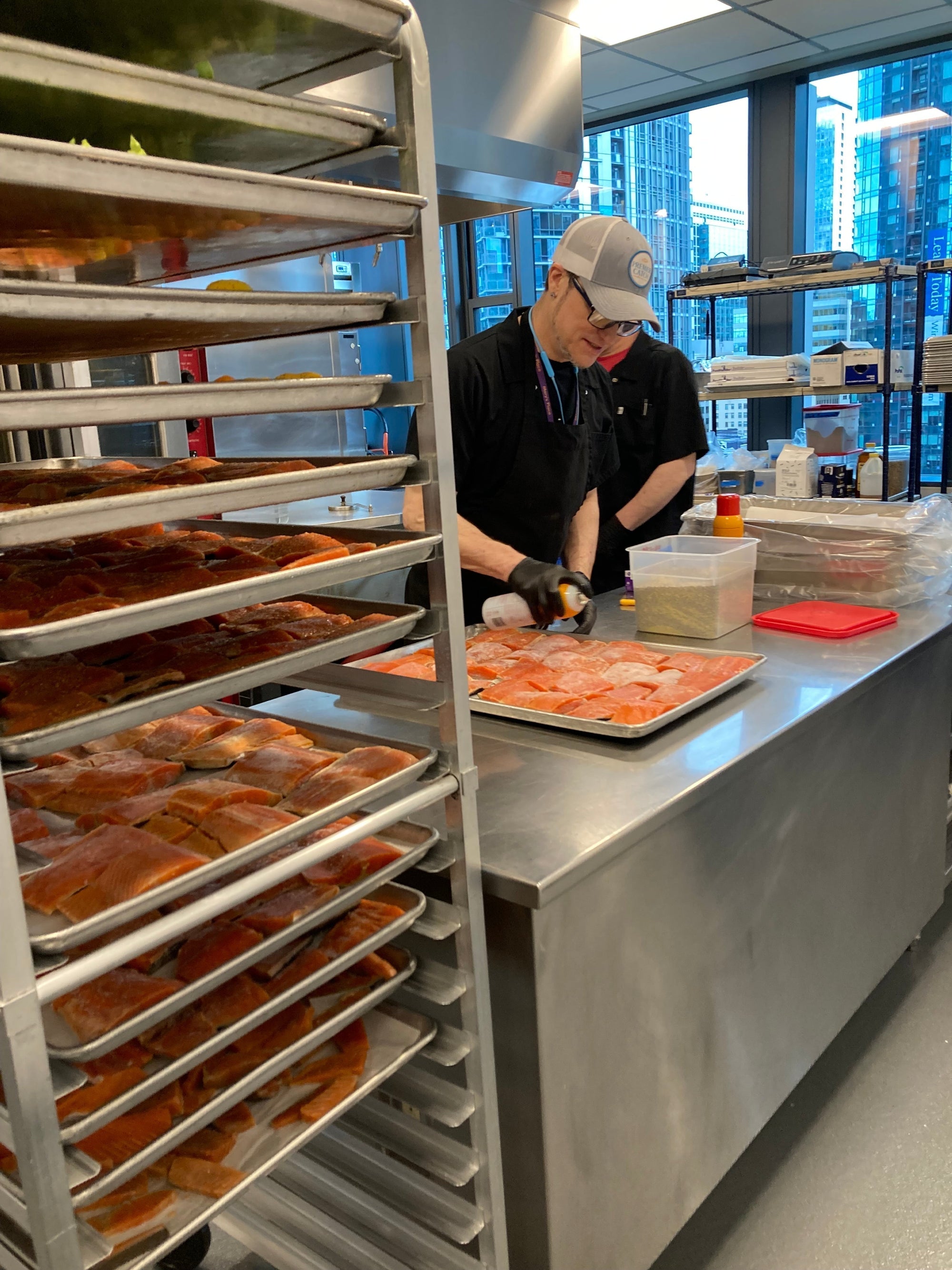It’s no surprise that professional athletes take their nutrition seriously. Proper fuel makes the difference between 1st and 2nd place, avoiding cramps, having the power enough to score a goal from farther out, or being able to bang around in the paint on the court. Long term, nutrition is a huge secret weapon.
We all know those athletes that eat like crap; sugar, fast food, not enough water; and still dominate. Those people are riding out their genetic gifts. But I’ll tell you, it eventually catches up to them. They will never know how much more incredible they could’ve been had they added nutrition into their arsenal.
As a functional performance dietitian, I specialize in fueling professional athletes. I maintain a roster of 15-20 professional athletes per year ranging from the NFL to the WNBA and all in between. In 2019 I had players from 4 different countries competing in the women’s World Cup. Which the USA officially won, with one of my most well known athletes, Megan Rapinoe, at the helm. I’ve been a part of League Championships, Olympic Gold, Silver and Bronze Medals and World Records.
I curate menus and supplement regimens for each athlete based on genetic analysis using a discipline called “nutrigenetics and nutrigenomics” as well as frequent blood work. Based on these physiological factors, plus their current health status and self reporting, I can design some of the most individualized protocols known in athletics today.
One thing that every single one of my athletes - from my NFL Center to my Olympic Swimmer - focuses on, is omega-3 fatty acid intake.
Omega-3’s are a unique source of fat, found in seafood, oils, nuts, seeds, and algae. However, the most bioavailable (best absorbed form) is from, you got it, seafood.
In the world of nutrition science, we look at intake of nutrients, but also the specific amount or dose of those nutrients that affect health on a cellular level. In omega-3 fatty acids, that recommended dose is between 1-4 grams (1000-4000 mg) of Omega-3 fatty acids per day. Most importantly, people with a family history of heart disease or neurological diseases, and of course athletes.
Omega-3’s have been shown to reduce inflammation in the heart, brain, gut, tendons, joints, skin, and pretty much all over the body. They have been shown to reduce recovery time from injuries and surgeries. They have been shown to reduce high levels of cholesterol, triglycerides, inflammatory markers like CRP and increase the body’s omega-3 index level. All of these things are essential to any athlete - and also fantastic for increasing the health span for all of us “normal people!” Think of omega-3’s like pouring cold water on a hot fire. They work.
Wild Alaskan King Salmon, Wild Sablefish, and Wild Alaskan Sockeye Salmon are the top 3 sources of omega-3’s. In order to hit that minimum goal of 1 gram per day, you’ll need to eat 2 servings of Premier Catch Wild Alaskan King Salmon per week. That is two, 8 oz portions per week. Not too hard! Sablefish would also be at that 2x per week level, and for our Wild Sockeye Salmon, you would need 5 servings per week.
The goal here is to eat wild seafood 2-3 times per week. In order to realistically do that, it has to become a lifestyle. You gotta put it on autopilot. Right now I would guess that chicken is your autopilot. You always buy it at the store, its always on hand, and you can throw it together easily in a bunch of variations of meals. But think about how many nutrients you are missing by eating all of that chicken, vs a much more nutrient dense protein like seafood? Its all about balance, and working seafood in regularly will not only improve your performance as an athlete (or just regularly active person!) but your longevity and health span.
Seafood is tough to buy in the grocery store. There are a lot of unknowns and it requires the consumer to ask a lot of important questions. This is exactly why Joci and I founded Premier Catch. We’ve done all the hard work for you, sourcing the very best and preserving it for peak freshness. All you have to do is stock your freezer.
The ultimate set up is to have Wild Alaskan Salmon (either King or Sockeye) and one other seafood item, delivered to your home once every 4-6 weeks. This allows you to serve seafood at least twice a week for your family, without wasting it, or having it pile up in your freezer. Just hit the “subscribe and save” button under the product online, and boom. It’s done (and you save money!).
In my professional opinion, this is probably the biggest lifestyle change that someone could make to live healthier longer. I truly believe that having omega-3’s consistently on board can prevent some of the leading causes of death in this country, including heart attacks, strokes, and more. For athletes, omega-3’s are non-negotiable in my book. Ask any of my athletes and they’ll tell you - I pour it down their throats!
Be like your favorite athletes in the world, go get healthy.
Ashley
If you have any nutrition related questions regarding seafood and omega-3’s please feel free to email me at ashley@premiercatch.com and I’d be happy to talk nutrition science with you!


